We test out Scarpa's radical-looking mountaineering boot, the Ribelle...
‘Radical’, ‘cutting edge’, ‘dramatic’… these are just some of the words that came to mind when we first saw the Ribelle Mountain Tech OD boots at the ISPO outdoor trade show last winter. Few could argue that this isn’t one of the most striking-looking mountaineering boots to hit the market for a long time, but unlike those outrageously-designed concept cars that visitors at car shows drool over but never make it into production, the Ribelle is now on sale in the shops and available for everyone to buy.
The Ribelle is one of the fruits of the collaboration between Scarpa and the late, great Ueli Steck, and the Ribelle appears to embody all the qualities that would have been important to the Swiss Machine (and indeed fast-and-light alpinists everywhere): uncompromising design, innovative features, high quality materials, and – of course – it is extremely light.
WHAT IS IT?
Scarpa describe the Ribelle (which is ‘rebel’ in Italian, if you hadn’t already guessed) as representing “the step forward for the new mentality of alpinists” and has been designed to take mountaineers from the valley floor to the summit and back again without the need to wear different footwear (such as comfy walking boots or approach shoes) for the walk-in and walk-out of an alpine route. This is an idea reminiscent of the Salomon X-Alp Carbon GTX which we’ve been using for several years now (and are big fans of) which is comfortable enough for long approaches but has enough stiffness in the sole to take a flexible crampon.
The Ribelle, however, is a far more technical boot than the X-Alp, with a stiffer sole to take semi-automatic crampons, is much warmer, and has more protection in the upper. So, unlike the X-Alp, which was only really suitable for glacier walks and easy alpine routes, the Ribelle can handle harder mixed alpine routes where more technical climbing on rock, ice and snow is par for the course.
CONSTRUCTION
But let’s get back to the boot itself. The Ribelle’s looks are of course the first thing everyone notices, however what is under the bonnet (continuing the auto theme) is perhaps even more impressive. The Ribelle incorporates plenty of Scarpa’s latest technologies, including SockFit, Heel Tension and FlexPoint systems, and also incorporates premium materials from the likes of Vibram (sole) and OutDry (waterproof liner). The most obviously ‘different’ aspect of the boot, perhaps, is the stretchy collar that replaces the (usually leather or synthetic leather) familiar cuff section on a more conventional boot. This collar has two loops at the top to aid getting the boot on and off, is waterproof thanks to the OutDry liner and also has a fleecey backing for warmth. The upper of the boot comes up just above the ankle and is made out of a synthetic leather, and the laces are tied off at this point too. The laces stretch almost down towards the toe – similar to what you see on climbing shoes and some approach shoes – and are protected from snow and debris ingress by a mesh panel which opens on one side and is secured with Velcro. The speed-lacing system allows you to pull the bottom half of the laces tight before adjusting the top part.
The lower part of the boot is substantial, featuring a large rand that wraps around the whole boot and a Vibram Pentax Precision III sole. The Ribelle has a crampon ledge at the back, though not the front.
IN USE
We’ve used the Ribelle over a period of about six weeks in the Alps and we believe that they are a game-changing boot that will be much imitated in the coming years. The first area it scores highly in is weight and comfort. The fabric cuff makes walk-ins very comfortable, yet provides enough support when actually climbing. Like the Salomon X-Alp, when traversing snow slopes being able to roll your ankles really helps to keep the crampons flat on the slope, thereby giving you the maximum grip. If you need to swap into rock climbing shoes for a route – or section of a route – then the Ribelles fit quite easily in your pack as the fabric cuffs roll down on themselves and into the boots. We even walked in the boot like this, and it feels much like wearing a climbing-style approach shoe.
The combination of the SockFit system, which encases your foot snugly, and the lacing system which can be adjusted well down to the toes, gives a really fantastic fit. Whether the lacing cover will be durable enough for long-term use, the jury is out, but it certainly does help keep ‘stuff’ out of the laces, and can also double as a crampon strap tidy. The Ribelle has a Vibram Pentax Precision III sole, and we found this really effective both in snow and on rock, providing excellent grip and traction. In terms of warmth, the Ribelle is strictly a summer boot, and even on the coldest days on Mont Blanc may feel a little light on insulation.
Overall though, this is a fabulous boot that will win lots of admirers not just for its looks, but also its light weight, comfort, and ability on technical climbs where both precision and protection are required. The shape of things to come? I certainly hope so!


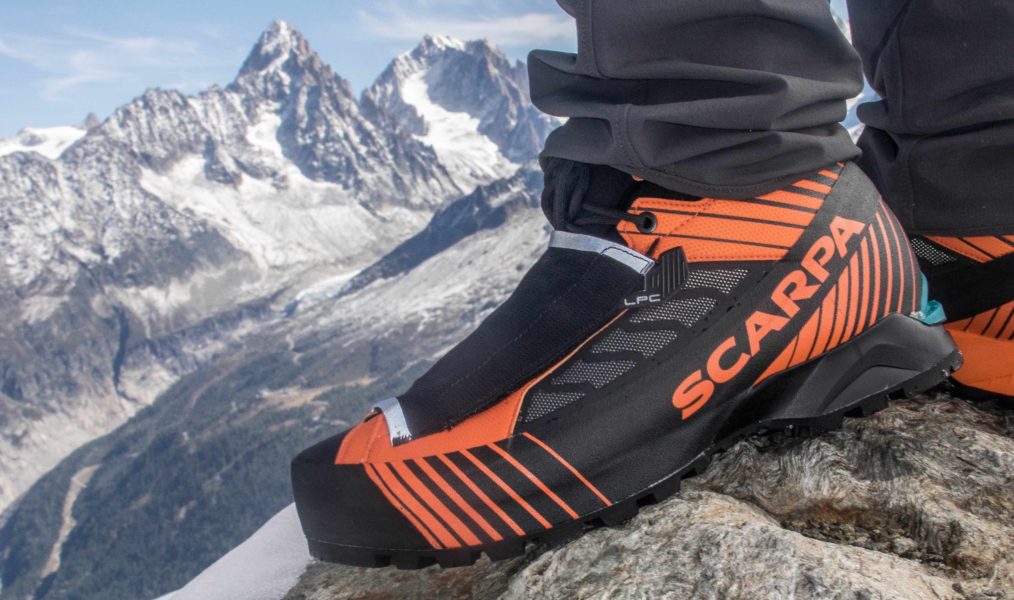




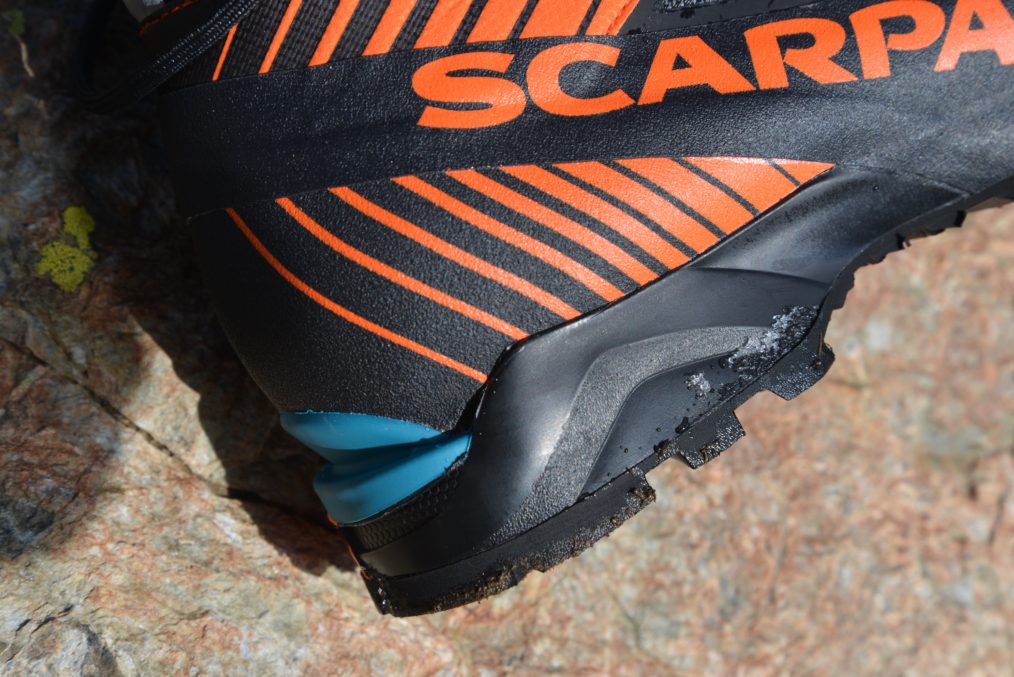
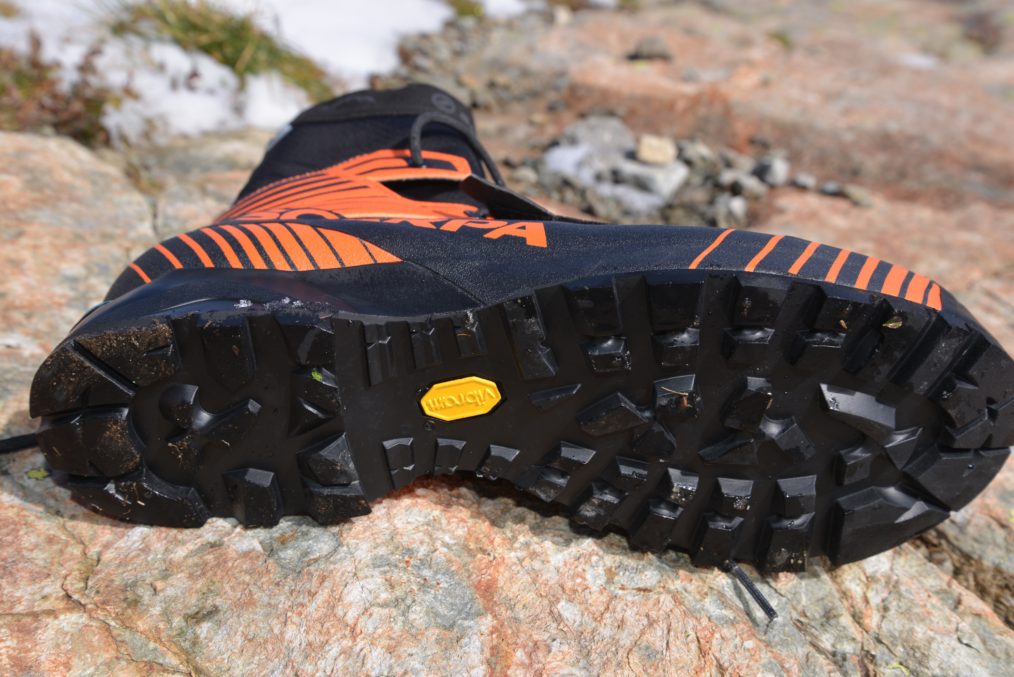
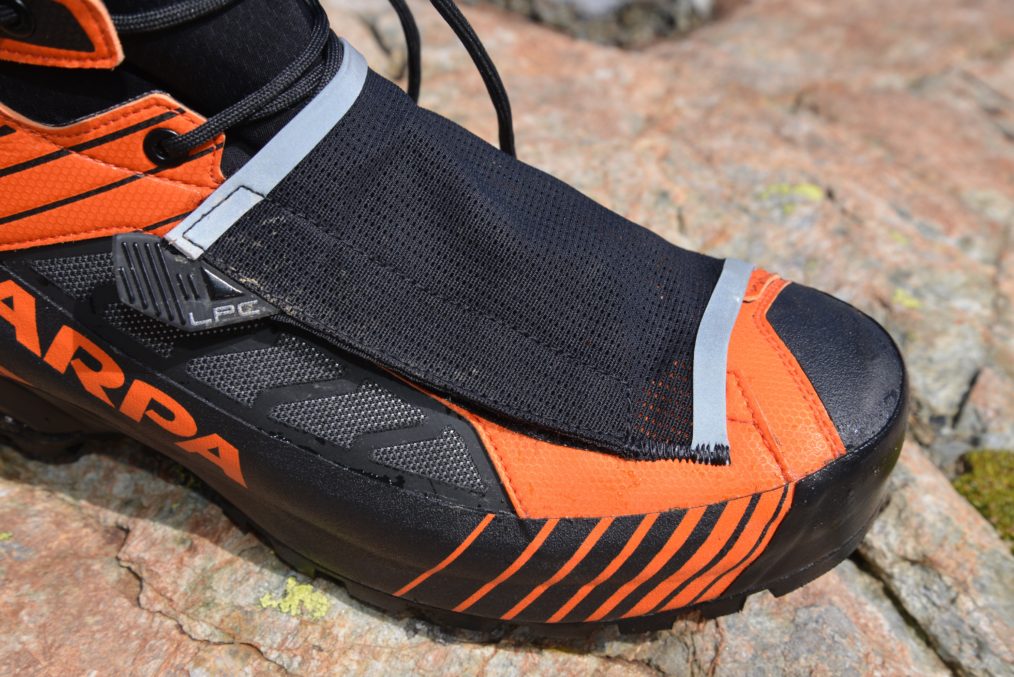
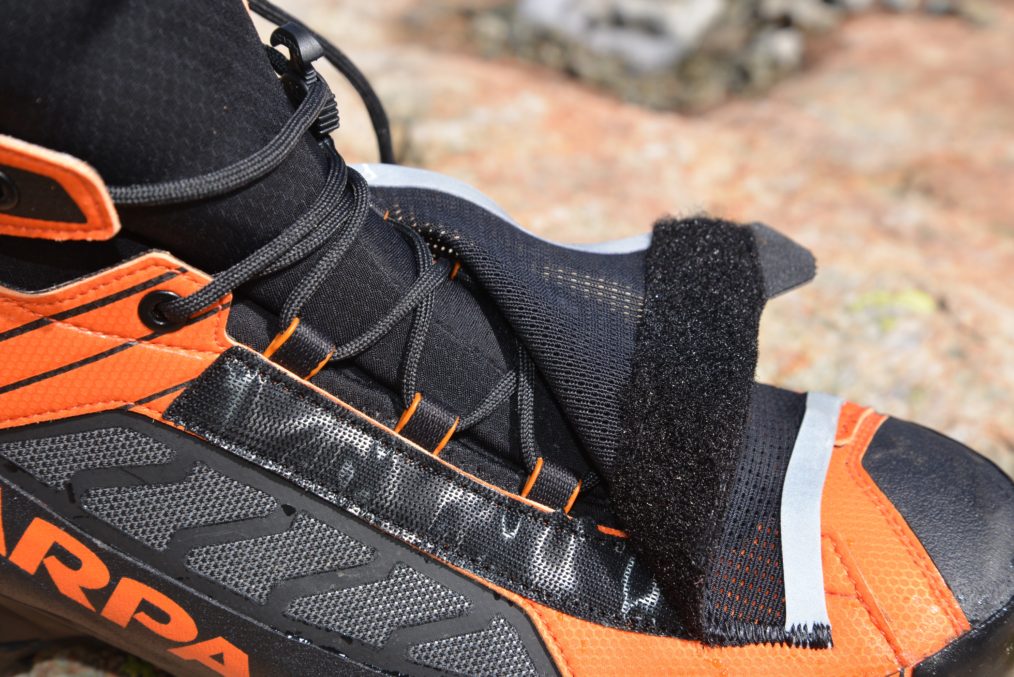

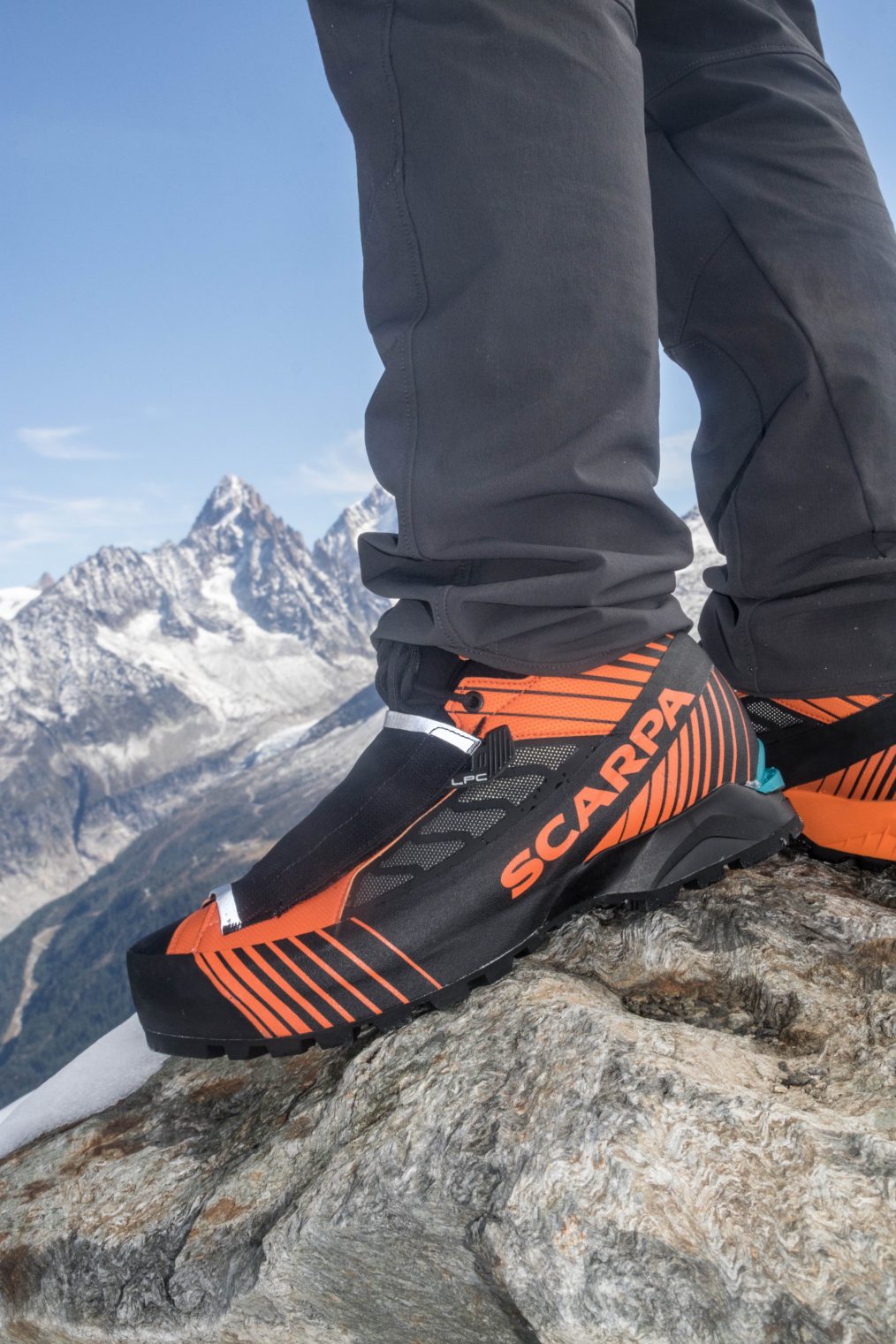

Comments
Hi there, great review. Would you say the Ribelle replaces the X-ALP Carbon 2 in every aspect (except price) or is there still room for the Salomon ? Thanks
Thanks for your comment David. I think there is definitely room for the X-Alp – we see it as a walking shoe/boot that can do a little bit of easy mountaineering, rather than a mountaineering boot which the Ribelle definitely is. So if you do mostly walking, but occasionally want to stick on crampons for glacier travel or easy alpine (or other snowy) peaks, then the X-Alp is a good bet. But if you’re intending mainly to do mountaineering, but want a comfortable boot for the walk-in and out, then the Ribelle is a great choice. Hope that’s useful!
Thanks for quick reply. I guess I will have to break the bank at some point then. I’ve received a pair of X ALP 2 a few days ago but discovered the Ribelle yesterday, which left me with many questions about my recent purchase…
I’m looking for a lightweight boot that is suitable for winter and spring conditions in the Pyrenees. Maybe these two are a great (but expensive) combo.
Thanks
How does the boot size compared to other Scarpa mountaineering boots?